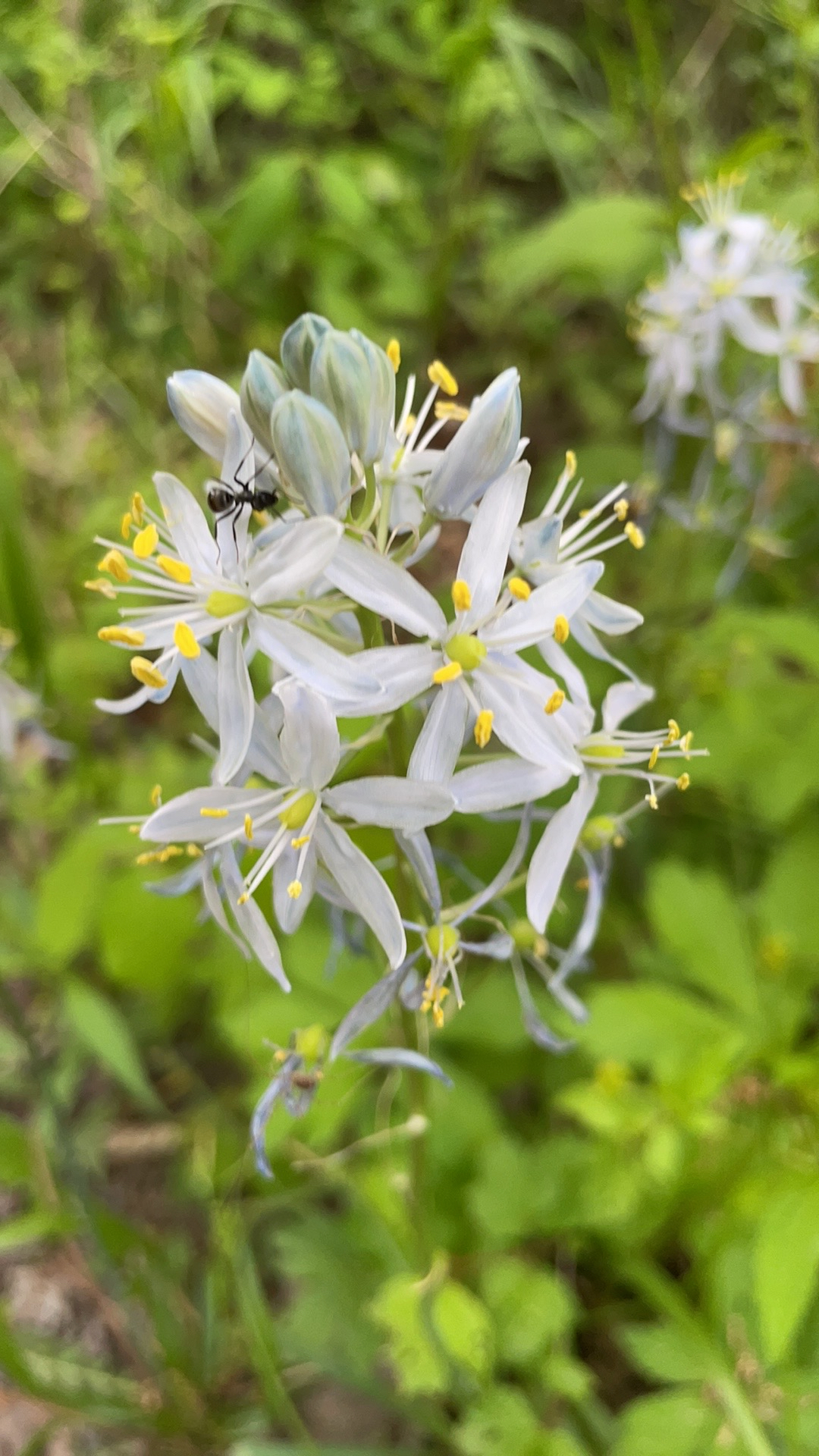Camassia Scilloides on:
[Wikipedia]
[Google]
[Amazon]
''Camassia scilloides'' is a
Flora of North America. It is native to the eastern half of North America, including

Native American Ethnobotany. University of Michigan, Dearborn. They can be used in place of potatoes, but could possibly be confused for poisonous
World Checklist of Selected Plant Families: ''Camassia esculenta'' (Nutt.) Lindl.
/ref>
''Camassia scilloides''.
USDA PLANTS *Jalava, J. V. 2013
Recovery Strategy for the Wild Hyacinth (''Camassia scilloides'') in Ontario.
Ontario Recovery Strategy Series. Ontario Ministry of Natural Resources, Peterborough. scilloides Flora of Northern America Plants described in 1818 {{Asparagaceae-stub
perennial
In horticulture, the term perennial ('' per-'' + '' -ennial'', "through the year") is used to differentiate a plant from shorter-lived annuals and biennials. It has thus been defined as a plant that lives more than 2 years. The term is also ...
herb known commonly as Atlantic camas, wild hyacinth, and eastern camas.''Camassia scilloides''.Flora of North America. It is native to the eastern half of North America, including
Ontario
Ontario is the southernmost Provinces and territories of Canada, province of Canada. Located in Central Canada, Ontario is the Population of Canada by province and territory, country's most populous province. As of the 2021 Canadian census, it ...
and the eastern United States.
Description
The species producesinflorescence
In botany, an inflorescence is a group or cluster of flowers arranged on a plant's Plant stem, stem that is composed of a main branch or a system of branches. An inflorescence is categorized on the basis of the arrangement of flowers on a mai ...
s up to half a meter tall from a bulb
In botany, a bulb is a short underground stem with fleshy leaves or leaf basesBell, A.D. 1997. ''Plant form: an illustrated guide to flowering plant morphology''. Oxford University Press, Oxford, U.K. that function as food storage organs duri ...
wide. It has a few leaves, each up to long. The flowers have light blue or whitish tepal
A tepal is one of the outer parts of a flower (collectively the perianth). The term is used when these parts cannot easily be classified as either sepals or petals. This may be because the parts of the perianth are undifferentiated (i.e. of very ...
s and yellow anthers
The stamen (: stamina or stamens) is a part consisting of the male reproductive organs of a flower. Collectively, the stamens form the androecium., p. 10
Morphology and terminology
A stamen typically consists of a stalk called the filamen ...
. The green or brown capsule is up to a centimeter long and divided into three parts.

Uses
Native American groups used the bulbs for food, eating them raw, baked, roasted, boiled, or dried.''Camassia scilloides''.Native American Ethnobotany. University of Michigan, Dearborn. They can be used in place of potatoes, but could possibly be confused for poisonous
deathcamas Deathcamas or death camas refers to several species of flowering plant in the tribe Melanthieae. The name alludes to the great similarity of appearance between these toxic plants, which were formerly classified together in the genus ''Zigadenus'', ...
.
Taxonomy
The superseded name ''Camassia esculenta'' (Ker Gawl.) B.L.Rob. (''nom. illeg''.) should not be confused with ''Camassia esculenta'' (Nutt.) Lindl., a superseded name for ''Camassia quamash
''Camassia quamash'', commonly known as camas, kwetlal, small camas, common camas, common camash or quamash, is a perennial herb. It is native to western North America in large areas of southern Canada and the northwestern United States.
Descri ...
'' subsp. ''quamash''./ref>
References
External links
*''Camassia scilloides''.
USDA PLANTS *Jalava, J. V. 2013
Recovery Strategy for the Wild Hyacinth (''Camassia scilloides'') in Ontario.
Ontario Recovery Strategy Series. Ontario Ministry of Natural Resources, Peterborough. scilloides Flora of Northern America Plants described in 1818 {{Asparagaceae-stub